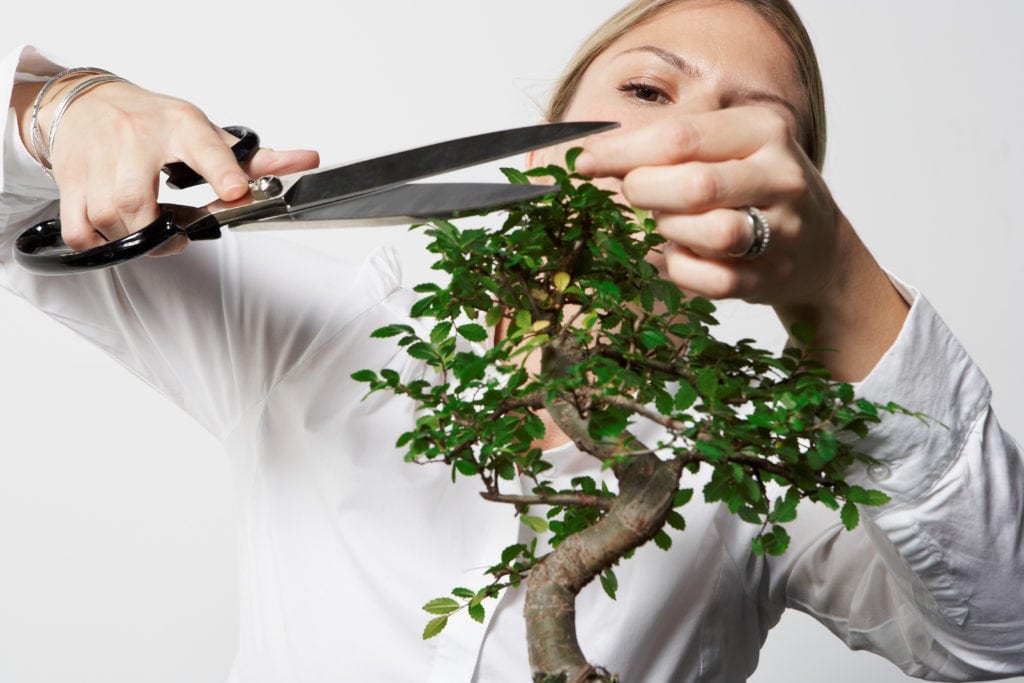The mighty oak tree has a lesson to teach us about how organizations can let go of forms, products, habits, or mindsets that no longer serve the organization.
As an oak tree grows taller, the canopy continues to spread upward and outward. As a result, the branches that are lower down on the tree trunk no longer receive as much sunlight as they used to. Therefore, those leaves can’t use photosynthesis to transform the sun’s rays into life-giving nutrients.

The oak tree initially shares the nutrients from other parts of the trees with these lower branches. Over time, the tree instinctually stops sharing resources with that branch and redirects the energy it is getting from the photosynthesis to the branches that are growing upward into the canopy. The resources that supported lower branches stop. Over time, the leaves drop off and the branch dies. Then, the branch breaks off at the intersection with the trunk creating a self-healing separation. The oak continues to grow and develop.
The lower branches of the tree served a purpose earlier in the tree’s life. They were critical to the younger tree and necessary for the oak to grow taller. However, as the tree grows and develops, these once essential branches become less helpful as the tree evolves.
Organizational Pruning
Unlike the oak tree, organizations have more difficulty letting go of old habits, mindsets, processes, and products that no longer contribute to its evolution. As humans, we have attachments to what is familiar and known. We don’t usually let go easily, even though we realize in one part of our mind that something isn’t working as well as it used to.
In every organization, there are programs or products that are not contributing as much to the organization’s impact, bottom line, and mission when compared with others. And yet, when leadership teams develop the annual budget, there is a tendency to hold on to these programs longer than needed.
As our organizations evolve, things that helped us grow at an earlier stage, need to be let go of to move on to the next stage.

For example, one of my consulting clients built their business by stopping everything to respond to requests for new business. Like a lower branch on the oak tree, that habit worked well to build their business. However, it didn’t work well when they tripled their revenues and the number of their employees. The larger organization needed to spend more time on strategic direction, stronger analytics, and a more sophisticated infrastructure to sustain their growth and support a much larger business. When this organization defaulted to their habit of dropping everything to respond to requests for proposals, they shifted their focus away from strategy to engage in an old habit. Eventually, that habit caused the organization to lose business and shrink back to a smaller size.
If an oak tree continues to shift resources to lower branches, the nutrients that feed the growth and development of the tree are constrained by the number of resources that are siphoned off to lower branches; branches that can no longer contribute to the tree. When we hold on to old habits, mindsets, products, or processes, the organization also pays an opportunity cost.
An oak tree also creates a self-healing break when the tree releases a lower limb. There isn’t the drama attached to the letting go of a branch that we might find in an organization.
Organizations are living systems and the humans in our organizations have both consciousness and emotions. These emotions can cause us to resist, mourn the loss of a program or product, and even get frustrated or angry about a decision to let go of something that no longer serves the larger organization. It is these emotions that add to the difficulty of organizational “pruning.”

In Nature, Form Follows Function
Letting go of programs or products to create a balanced budget is one form of letting go. However, we have many old mindsets and procedures that are more insidious in our organization and create wasted time, attention, and money.
For example, if a highly controlled set of processes in one part of the organization slow down innovation from another part, there is a huge waste of time, attention, and emotional frustration attached to the controlling processes. There is a mindset that interferes with desired adaptation and innovation. Your organization’s growth is impeded by an attachment to an outdated process.
How can we make decisions to let go of old forms or processes easier? Is there a lesson from the oak tree that can help us think about outdated forms and learn to easily let go of the ones that no longer serve our higher purpose?
Dr. Kathleen E. Allen writes a blog on leadership and organizations that describes a new paradigm of leadership that is based in lessons from nature and living systems. She is the author of Leading from the Roots: Nature Inspired Leadership Lessons for Today’s World (available for purchase September 4, 2018) and President of Allen and Associates, a consulting firm that specializes in leadership, innovation, and organizational change. You can sign up for her blog on her website: www.kathleenallen.net






